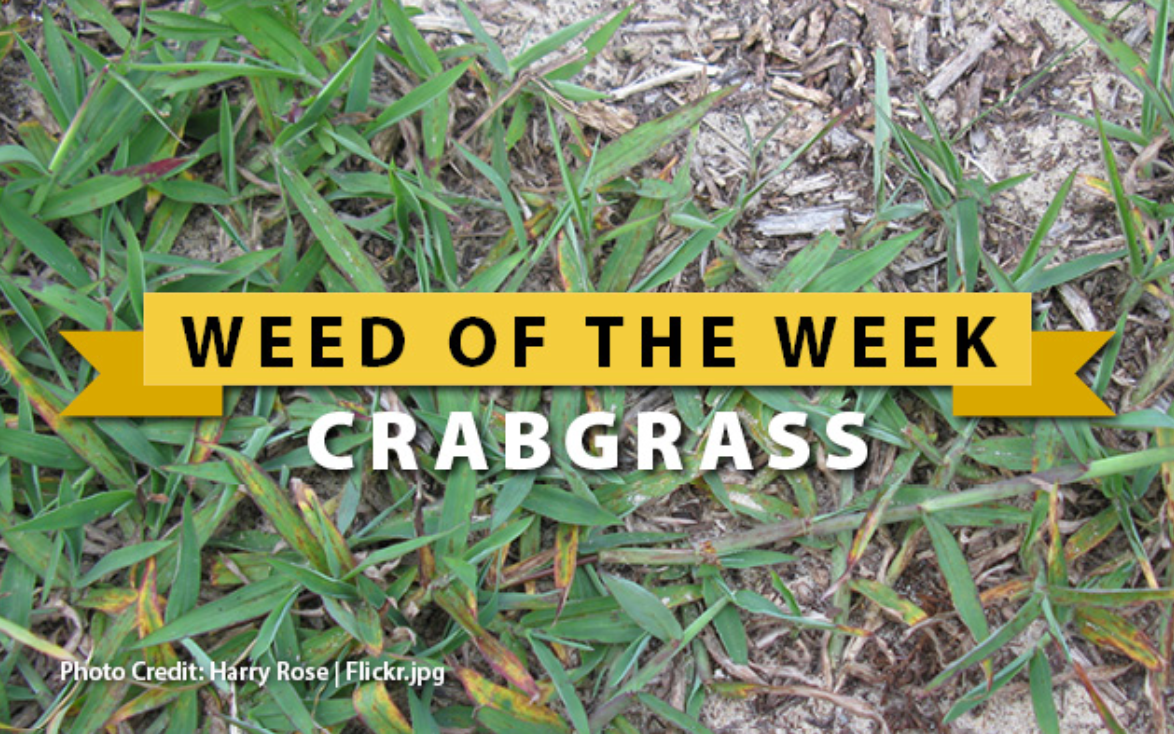Weed of the Week: Crabgrass



- NOTE: Crabgrass is often mistaken for goosegrass. Click to learn more about goosegrass to properly identify grassy lawn invaders.
WHERE IT GROWS:
This weed prefers areas of lawns where turf is weak and experiencing bare spots. Crabgrass favors lawns that have been mowed too short, as well. This weed can be spotted in turf, lawns, ornamental landscapes and vegetable gardens.
GROWING SEASON:
Both large and smooth crabgrass species begin to germinate when soil temperatures reach 55°F for at least 3 consecutive days. Growth and germination will continue throughout summer and into fall. After the first heavy frost, crabgrass will die.
HOW TO MANAGE:
Because crabgrass is a prolific seed producer, it's difficult to kill once it takes hold in the soil. The best method for removing crabgrass is to follow these good cultural methods. First, maintain a healthy, dense turf with a strong root system and a good lawn fertility/care routine to prevent bare spots or weak turf that allows for crabgrass to move in. Next, ensure the correct mowing height for your turf species and avoid lawn scalping since this weed can survive in low-mowed turf. Finally, establish proper irrigation, aeration and thatch management practices so crabgrass cannot establish itself into lawns.
For intense crabgrass infestations, use a herbicide that contain season long pre-emergent and post emergent control. Look for products that contain the active ingredient (AI) dithiopyr, a proven herbicide control technology that provides pre- and post-emergent control for crabgrass and other weeds (NOTE: Avoid the use of herbicides in the heat of summer, as they will cause more stress to turf). Apply the herbicide in early spring when soil temperatures reach 55°F. Once applied, DO NOT mow or cut back the crabgrass in any way; allow the herbicide to absorb into the shoot tissue so that it may be transported down to the roots. Because crabgrass is an invasive, tough weed to control throughout the growing season, repeat applications of herbicides may be needed until the infestation is eradicated.
For professional fertilizers, humic and AMP-XC™ enriched products available, please visit TurfCare’s online Product Catalog.
For green industry professionals or others interested in ordering Turfcare products, please contact our Customer Service to find a distributor near you.
The TURFReport Highlights:
Additional Articles and Insights
















